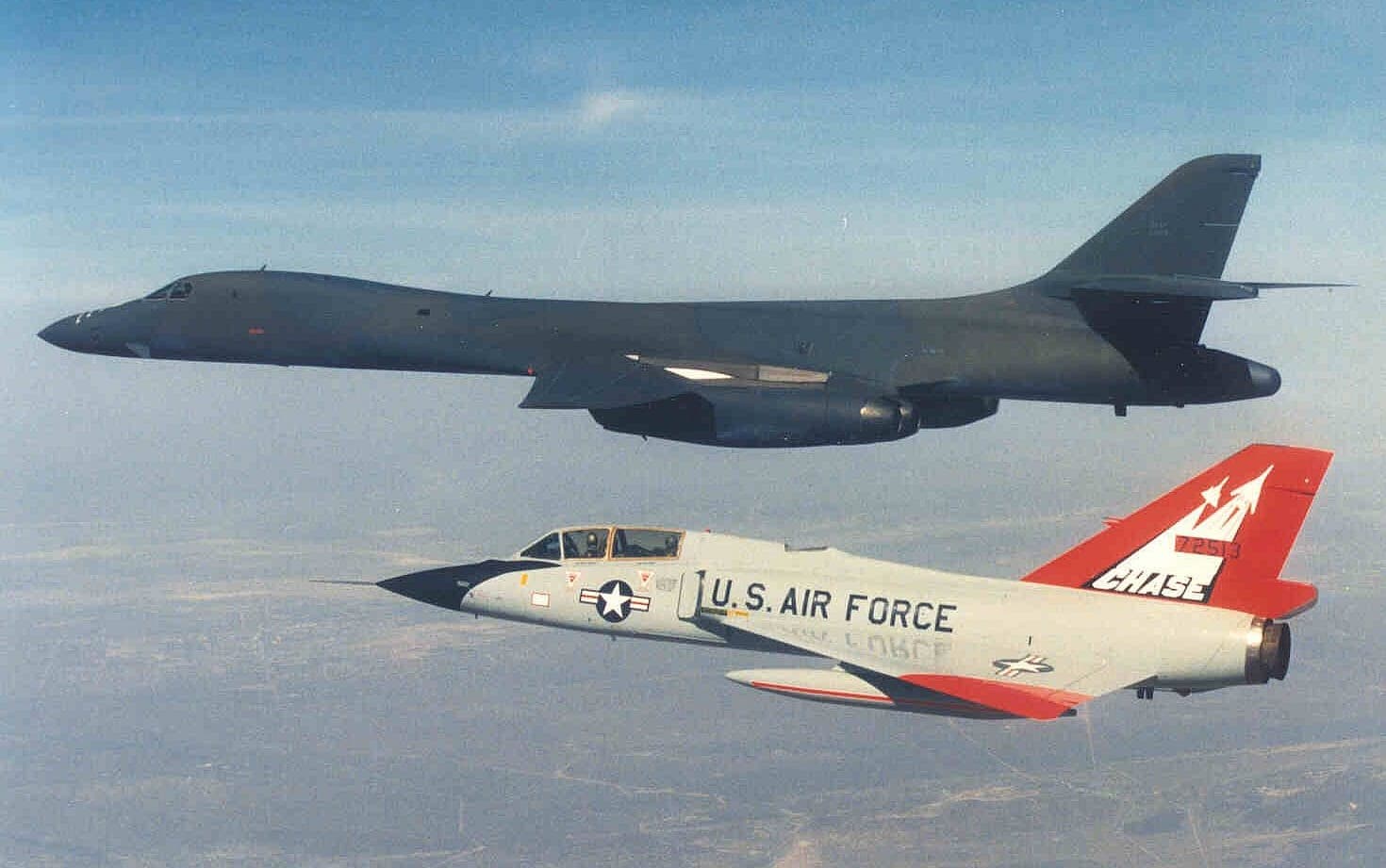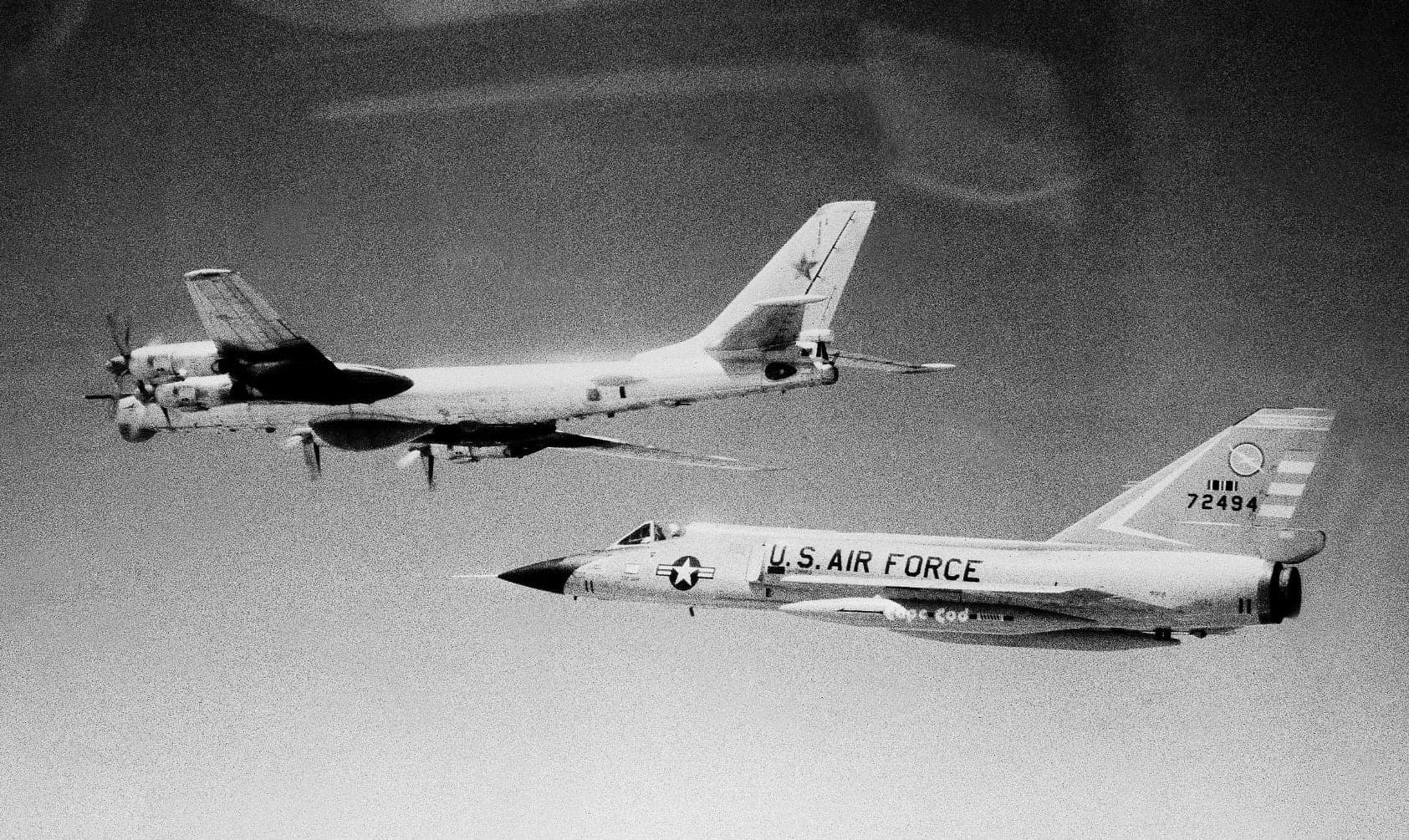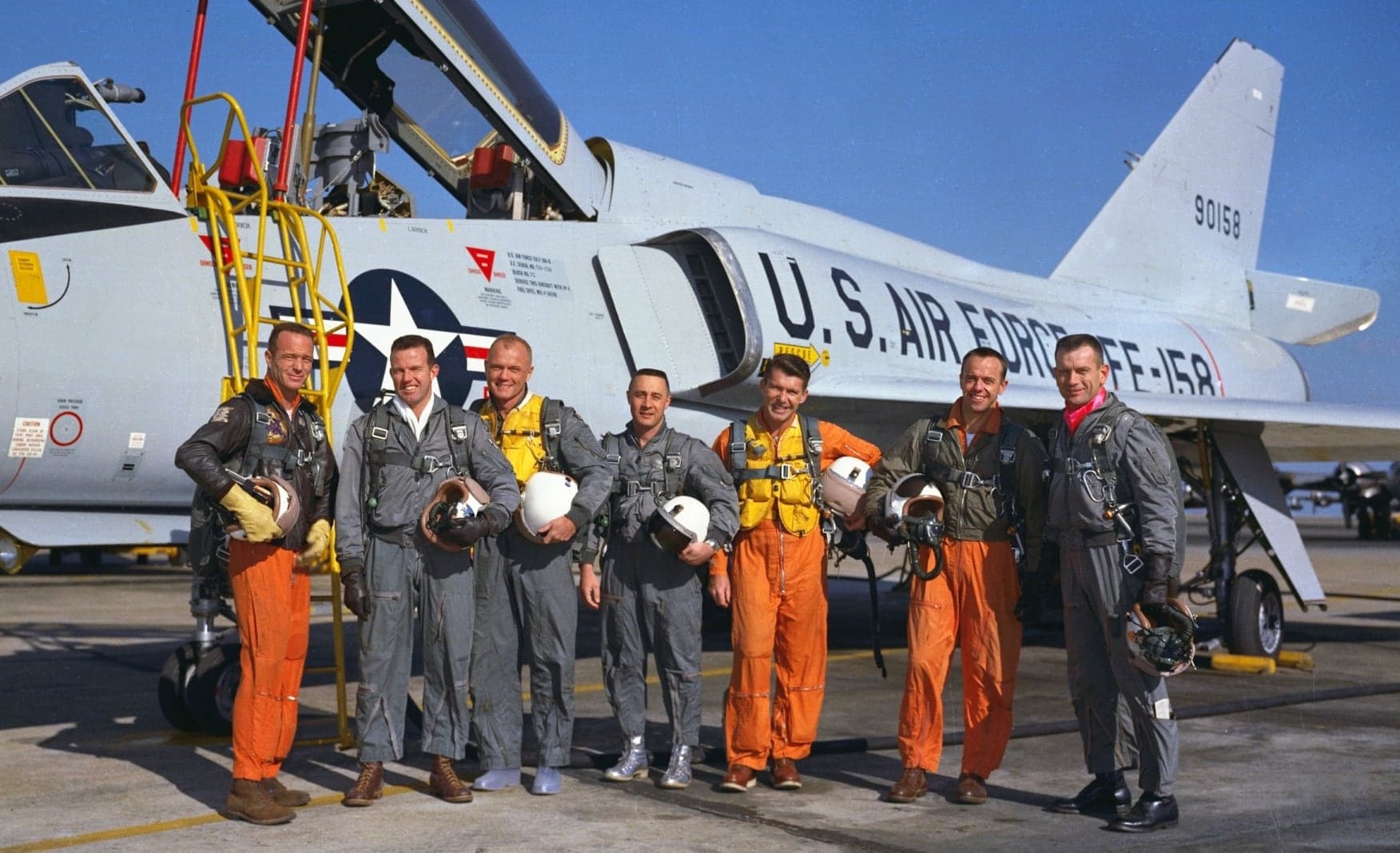Author’s Note: Delta Dart trivia certainly doesn’t tell the whole F-106 story. Good thing we did an in-depth Six story appearing right here.
Let’s start with the need for speed. The F-106A Delta Dart interceptor was the world’s fastest single engine jet fighter aircraft. Bar none. Full stop. People tend to forget that in 1959 an F-106A topped out at 1,595 miles per hour flying at 40,000 feet. That’s Mach 2.31 (at that altitude) to you and me.
F-106 Delta Darts served primarily in the continental United States, Alaska, and in Canada. F-106 Fighter Interceptor Squadrons (FIS) did deploy to such garden spots as Osan Air Base (AB) in Korea, Hahn AB in Germany, Keflavik AB in Iceland and Howard AFB in the Panama Canal Zone.

F-106As and F-106Bs were used as chase aircraft for test flights of aircraft like the Rockwell B-1B Lancer bomber and for other aircraft in development-especially during the 1980s.
F-106Bs did receive the majority of upgrades the F-106A received, but the two-seater never got the 20 millimeter Vulcan cannon mod.

The closest an F-106 came to firing a shot in anger was when a Martin MGM-1 Matador cruise missile stopped responding to remote control during a test on 14 May 1960. An F-106A fired a pair of unarmed Falcon missiles at the Matador, bringing the dumb cruise missile down. Delta Dart combat record: F-106A- 1. Enemy- 0. Unless you count the QF-106A drones!
Pilots flying the Dart often cavorted high in the sky, but some of them, involved in the development of high-altitude interception tactics, flew the F-106 at altitudes above 75,000 feet while wearing full pressure suits.

The two prototype F-106s were equipped with the first side-stick controllers used in American aircraft. Found to be too newfangled for old-school stick-and-rudder men at the time, the production Six was equipped with that awesome dual-grip stick in the real world. Many don’t know the F-16 wasn’t really the first implementation of the side stick controller.
Sixes often rode herd on Soviet Tupolev Tu-95 Bear bombers as they trolled along the east coast while transiting from the USSR to Cuba or back to the USSR from Cuba. Interceptions were usually pretty casual but occasionally they became a little tense. Delta Dart jockeys were treated to all manner of antics from the tail gunners in Soviet Bear bombers too. Sometimes they replied in kind…

Delta Darts were sometimes used as aggressor simulators for dissimilar air combat training (DACT). The Sixes would usually simulate Soviet Mikoyan MiG-21 Fishbed fighters when used in this manner- which wasn’t very often. On their own merit, F-106s were often able to dogfight as well or better than the other tactical aircraft they went up against, thanks in part to those lightly-loaded delta wings.
There were no foreign operators of the F-106, although efforts were made to sell multi-purpose versions of the Dart to both Japan and Canada. The JASDF chose the McDonnell Douglas F-4EJ Phantom II instead. Canada was interested because of the demise of the Avro Canada CF-105 Arrow but the Canada deal went south.

The National Aerospace and Space Administration (NASA) used several F-106 aircraft for testing between 1966 and 1998.The last NASA Dart retired was also the last F-106 flown. NASA also used F-106Bs for Astronaut transport for a time before their T-38s.
F-106 oddities include the F-106C/F-106D which would have had an extended nose housing an advanced radar and several other one-off design studies and concepts. One such concept was a General Electric J93-powered Mach 3-capable Six. Another was an F-106 with forward mounted canards.

The Cornfield Bomber was actually a cornfield interceptor, but the story goes that a F-106 pilot got himself into a flat spin at altitude. After trying to right the jet, the pilot ejected. Rather than auger in and create a smoking hole in the ground, the Dart righted itself and ended up belly landing in a snow-covered fallow field somewhere in Montana. The aircraft was recovered, repaired, and put back in service- and later flown again by the same pilot who ejected from it. The jet now resides at the US Air Force Museum.

F-106 pilots were fond of telling anyone who would listen that Soviet bomber crews were terrified of the Genie nuclear-tipped missile carried by the Dart. In private moments the F-106 pilots might also admit they were definitely scared of it themselves- the blast radius of the nuclear-tipped weapon probably meant that to fire the missile was to be eliminated by its detonation.
Operation Highspeed was a flyoff between the F-106A and the McDonnell Douglas F4H-1 Phantom II. The obvious conclusion: The F-4 was a capable interceptor (especially with a RIO in it) but could also tote bombs and other things that went boom. The Six went on doing the ADC mission. The Phantom went off to fight in Vietnam- where hundreds of them were lost.

The first midair refueling of the F-106 was done during emergency deployments of several FIS squadrons to Osan AB in South Korea as part of responses to the 1968 Pueblo Incident and the 1969 VQ-1 World Watchers EC-121M Warning Star shootdown. The 318th FIS Green Dragons was the first squadron to arrive at Osan, but eventually the 95th FIS Mister Bones, 48th FIS Tazlanglian Devils, 71st FIS Ironmen, and 94th FIS Hat in the Ring would all deploy to South Korea.
To sum it all up, The Dart was the fastest of the production Century Series fighters, the last of them to enter service, and the last of them to be retired. Because when you’re out of Sixes, you’re out of interceptors.

Yah, always liked them. I was with the 94th FIS at Selfridge AFB, MI (believe pic above) as an Enlisted Swine, Air Ops Spec… but got a ride in one and did the High Altitude Camber at Wright Patt.. great experience they were. Then Pilots started getting shipped for F-105 for SEA so I got over there too, but got stuck with C-130s.. Oh, well… C’est La Vive..
I worked in SAGE ’62-63 at Beale AFB in N. CA where I helped guide the fighters to within range of their onboard radar. We had F106’s based at Castle AFB in Merced. We had F101’s and 102’s as well. I seem to recall that the Sixes had an onboard computer that received target info from…..our ground based computer sent via data link. Not sure it worked all that well because we still guided the planes to the location of their target. One of my memories was having a test flight with one of the Sixes that flew over the Sierra Nevada Mountains and reached 1500 mph. It was my favorite of the fighters to work with because it just looked sleek and fast! Memories!
An engineer down at Convair told me that thee 106 was the 102 built to spec.